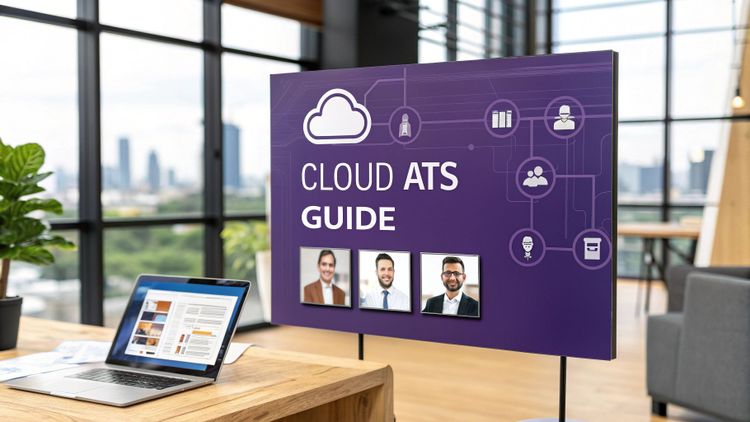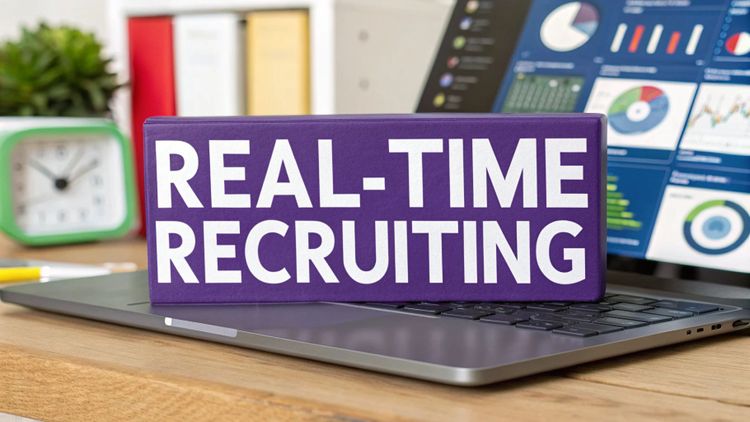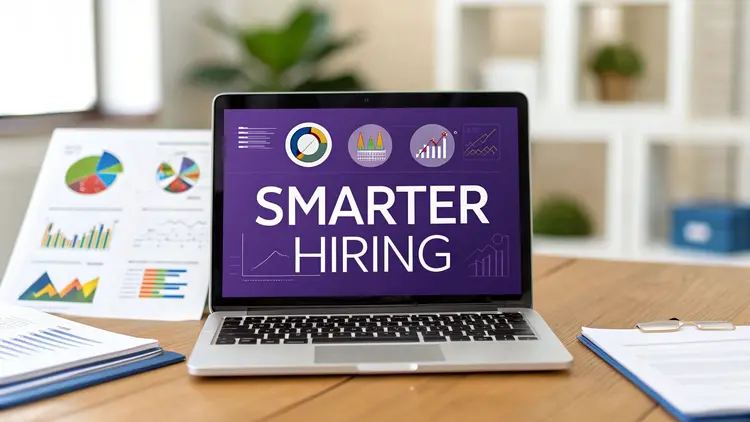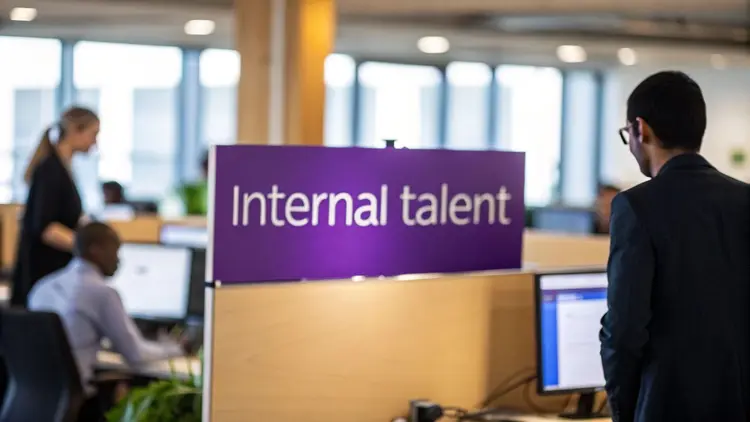Industry Trends
9 Effective Recruitment Practices in 2024 and Beyond

There's so much to learn and so much you can do in the field of recruiting.
New developments are constantly entering the day-to-day as technology and the external environment shape the world of work.
So among the various initiatives and tactics you can use, what truly works and will likely endure the test of time?
This is what we'll look at today - 9 of the most effective recruitment practices in 2024 and beyond.
Let's dive in.
1. Upgrading your tech (often)
We’ve come far from the paper-based HR practices of the 20th century. Instead, much of HR is now digital, data-centric and automated.
Recruiters and HR managers nowadays use software tools for various processes, such as workplace assessment, job distribution, tracking HR metrics and more.
Still, new technologies are being launched daily in the hiring space, helping with every area from scoping your job posts to onboarding new team members.
These tools can often save you a significant amount of time and resources so you can focus on high-impact activities such as enriching company culture and improving the candidate experience.
As the rate of innovation in HR increases, evaluate the tools you use at least once a year to make sure you’re making the most of what’s available.
2. Virtual Recruitment
The pandemic has heavily affected the transition towards more flexible work and recruitment methods and so one of the main ways employers will recruit in 2022 is virtually.
Virtual recruitment involves software tools and video conferencing platforms throughout the hiring journey so you can source and select candidates from anywhere - safely and conveniently.
In an effort to make the most of this trend, think about your application process and overall workflow - are there steps that require in-person meetings that could be done virtually? Can you send and sign documents digitally?
Changing your practices one step at a time will help you digitise hiring and bring a number of advantages along the way.
3. Social Recruitment
Social media has been a big part of the recruiting scene for a while now, with over 83% of organisations currently advertising via social media. This is supported by data from PRWEB last 2020 - over 67% of surveyed hiring decision-makers saying that social media is critical in today’s recruitment scene.
The use of social networks by candidates makes these platforms good potential channels to showcase your employer brand while reaching more people with your job posts.
Social recruitment seems to be here to stay so consider how you can make the your presence there as it relates to hiring.
Recommended reading: How to source more and better candidates with LinkedIn
4. Proactive Recruitment
Data from the ONS reveals that employment rates are rising at healthy levels which means that it’s a job seeker’s market out there. Moreover, data reveals that job vacancies have increased 99% since late 2020.
Proactive recruitment is the practice of identifying and building connections to potential candidates even before an actual position has opened up in your company. Recruiters that actively seek out great potential candidates create and nurture a healthy network.
Establishing rapport with the potential candidate introduces them to the notion of working for you without any pressure.
Ideally, by the time an opportunity arrives, you may already have a group of great people eager to learn more and apply.
In 2022, proactive recruitment will become standard practice for recruiters looking to attract passive job seekers.
5. Internal Recruitment
A competitive labour market turns a recruiter's eye inwards to their employees. Internal recruiting is the process of horizontal or lateral advancement within your ranks to fill a new vacant position.
Internal recruiting has many benefits, which makes it very useful for hiring managers. For example, you can:
- Save resources
There’s no more need for significant time and money for advertisement efforts. - Increases employee engagement
Providing plenty of advancement opportunities for your employees will create a healthy culture of productivity and competition. - Shortens time to productivity
Onboarding periods will not take as long because employees are already familiar with the primary company processes.
If you want to improve your internal hiring processes in 2022, consider the existing talent you have and whether their skills and ambitions are better suited for other roles.
6. Focus on Employer Branding
Employer branding is becoming more critical in the recruitment industry as candidates gain access to in-depth reviews and salary data.
About 84% of respondents from a study done by ReviewTrackers reveals that a company’s employer brand affects their application decisions, while LinkedIn has shown that it also affects company profitability.
So think about the resources you allocate to areas like professional development, team building activities and other benefits - all crucial to creating a strong employer brand.
7. Think D&I
Data reveals that diverse companies perform better than their counterparts in cash flow per employee, revenue, and talent preference.
This has been a good year for the UK's diversity and inclusion efforts, increasing engagement levels for mixed minority ethnicities, female staff, and more. You can expect these recruitment practices to further improve in the coming years.
If you want to improve your diversity and inclusion efforts, one of the best things you can do is begin with a non-biased hiring process.
SeeMeHired has a D&I module that will mask candidate personal data during the shortlisting process to minimise unconscious bias. This is a valuable tool to ensure that you’ll get the best out of your talent pool. Learn more in a free demo.
8. Prioritise the Candidate Experience
A 2017 IBM report reveals that candidate experience has far-reaching effects beyond the typical candidate-recruiter relationship.
Keep in mind, candidates talk and share their experiences with each other all the time.
If a candidate didn’t have a positive experience with your application process, not only are they less likely to apply for a job in your company again, they will most likely talk to their friends and advise them against applying to your company, as well.
Additionally, the IBM study reveals that companies with bad candidate experience can see their bottom lines suffering as consumers get wind of their recruitment practices and get discouraged.
So think about the candidate perspective every step of the way as you hire new employees in 2022 - you may find gaps and steps to improve which have been hurting your employer brand and offer acceptance rates.
Recommended reading: How to create an outstanding candidate experience]
9. Greater Focus on Soft Skills
The pandemic highlighted the need for adaptable, determined, and emotionally resilient talent.
In addition, research by Deloitte suggests that soft skills will gain more and more of the spotlight in the following years: at least two-thirds of all jobs will be based on soft skills.
Indeed, it can be argued that hard skills can be taught, but soft skills are more challenging to come by. With the many adjustments and global uncertainty that we have had to face for the past year, recruiters are hard-pressed to find people who can adapt to change as quickly as they can learn hard skills.
You can get ahead of the competition by prioritising soft skills early in the game, as you can expect others to follow by 2022.
Utilising the Most Effective Recruitment Practices in 2024 and Beyond
Recruitment has evolved into a dynamic industry that prioritises flexibility, technology and data centricity.
But despite all the recent innovation, there’s still plenty of room for improvement and new practices in the HR space. Making sense of these changes and committing to good strategies that can serve you in the long run isn’t easy.
We hope this shortlist of best recruitment practices will help you navigate the changing world of recruitment and propel you to learn more about each individual trend or initiative we mentioned.






























